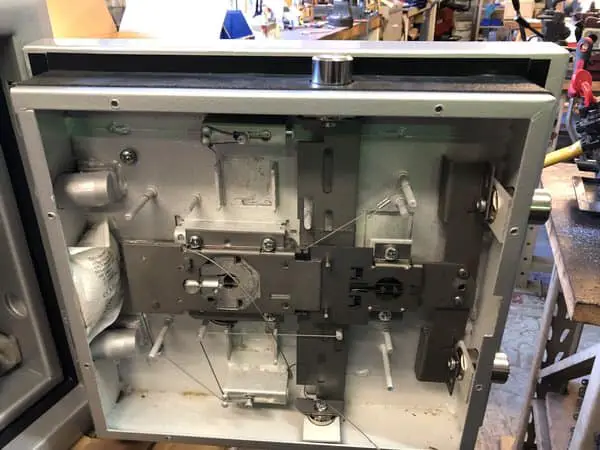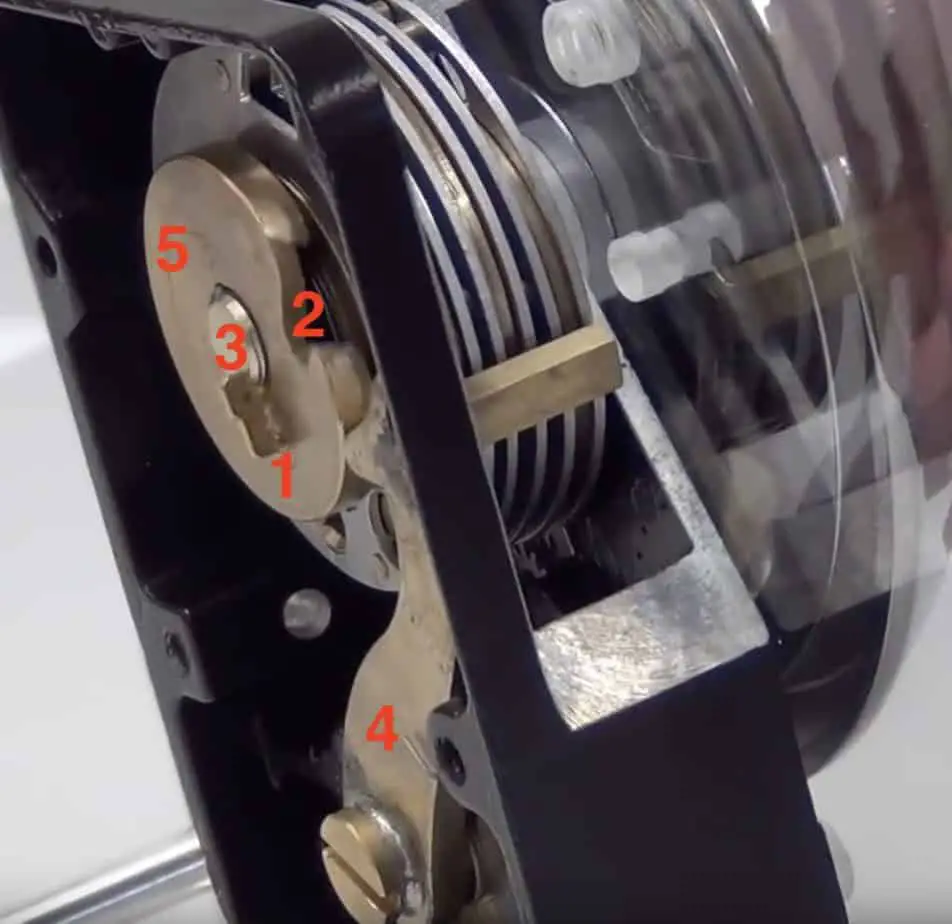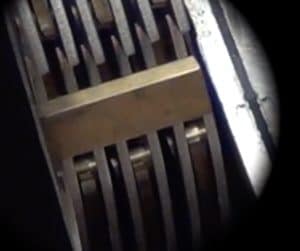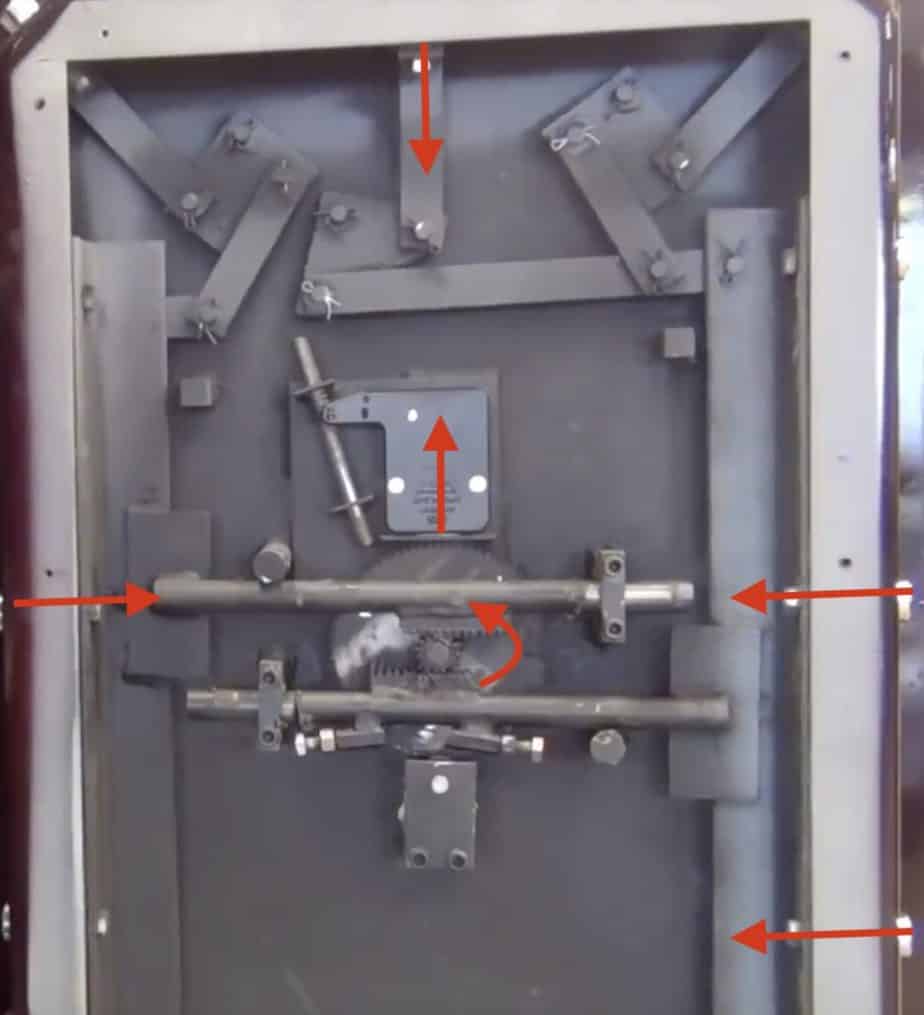When I wanted to choose a Safe, I decided to gather information and study safes mechanisms to make a good choice. There are so many safes to choose from out there that making the right decision can be a feat. I wanted to put myself in a burglar’s mind as well as on the factory side. Here is what I learned.
How do safes work? A safe is a strong steel box. Its door is blocked by 1 to 8 bolts. The lock is designed to operate those bolts by translation. The lock allows access and provides the motion necessary to unlock the bolts. The lock can be operated by a key, by a mechanical code, electronic code or fingerprint sensors. Everything works in perfect harmony.
There are many types of safes. And if the carcass itself varies little from brand to brand, the door and the lock is where all the engineers express their own talent of innovation. Many technologies exist out there, and I have listed each main family to help you to choose your own.
The Carcass: The safe as in a strong box
Safes have been created, invented if you will, primarily as strong boxes that can’t be cracked open hence made out of steel. And they can’t be taken away, that’s why they are designed to be anchored to the floor. But to secure valuables, you have to access the box. It is no more the perfect box in itself since there needs to be a door.
The box usually consists of two layers of steel. In the case of fireproof safes, there is some fire retardant material between the two sheets of steel.
If you want a better understanding, I have made a complete guide on ‘how safes are made’. It is a good read if you haven’t prior to this one: complementary details are explained.
The door

The door is in a way one of the sides of the box that moves. But to remain securely closed, there is a moving piece of steel, stainless steel, that moves and goes into a latch in the wall of the box. It is called the bolt. This steel receives further treatment in the form of cementation in order to resist a saw or drill.
The lock
But how do you move this piece of steel? This is the role of the lock. In fact, the lock has two or even three purposes. – It needs to be able to apply a sliding movement to release the door.
- But it needs as well, and we shouldn’t forget that, to prevent the latch to move or slide freely by applying pressure on it. This is the role of the bolts stoppers.
- Lastly, the lock needs to accept the authorization or reject it: presence, insertion, and rotation of the right key, presence of the code.
That’s basically it: you turn the key and by doing so you simultaneously identify yourself and provide enough force to slide the latches (or bolts). With an electronic lock, the code provides authorization to turn the knob, and by turning the knob you can slide the bolts and open the door. Some electronic safes are equipped with a motor. By dialing the code, the keypad gives contact instruction to a small motor that slides the bolts. A spring usually applies pressure on the door and once the bolts don’t hold the door closed anymore, it opens itself.
How to protect a safe from burglars
Against drill: A manganese sheet is placed behind the door. We will not provide any information as to how to crack open a safe. Of course: this isn’t a how-to guide for burglars to do their unethical job, even though many locksmiths have to know all this just to service safes and provide help to their clients. All this knowledge is not only beneficial to professionals with their careers but also to any consumer who wants to understand how things work. It helps to make the right choice in terms of price and security. And a well-informed person is stronger in general. It might just help to decide as well when to ask for professional help, to understand the quote or invoice. And trust your local locksmith.
One of the unauthorized most known ways to open a safe is to drill. Yes of course, but where? Whether it be the latch itself to slide it or the lock (bolt stoppers) there is a way to prevent it. And each and every maker has reacted and done something against that security breach. First, the door has more layers of steel than the structure (usually 3 to 4) but a layer is made of reinforced hardened steel to prevent drilling. But the weakest point is definitely the lock itself. If you drill the right point, you just slide the bolts with a small screwdriver. That is why the lock is protected by an additional layer of hardened steel or manganese treatment for best results. It is hard, I mean really hard, to drill to the lock even with special and expensive tools.
Nylon wire reacting to heat and drill. Another known way to open a safe is to cut it with heat (welding tool). That is why bolts rest upon springs. And these springs are held in place by wires. When the heat rises, the wires melt, releasing the springs. The springs hold the bolts close and the safe is in a ‘safety’ position: it can’t be opened anymore even with the right key or code. But the burglar didn’t make it and must have left rather disappointed. Of course, if he could gain clean access to the side or rear of the safe, it is always possible to open it with a blocked lock. That is why anchoring the safe properly is crucial. And putting it in a place where it is kind of integrated, with shelves on top of it or furniture to the side is important: the easy access will only be the door which is especially hardened. A burglar will not have enough room to deploy his tools or cut the side. You will be extra safe, pun not intended.
Bolts are cylindrical and hardened. Another known way to open a safe is to saw the bolts or drill them to cut them. And if the bolts or latches ever get broken, the door will eventually open. Against the drill and the saw, the answer is the same. The bolts are again made out of hardened steel very difficult to saw. Furthermore, good safes have cylindrical bolts: they offer additional security. It is almost impossible to apply pressure with a drill on them. And a saw makes them turn (In some cases) which is the ultimate way to prevent sawing the bolts. You have understood: choosing a safe with a rounded bolt is a better decision. In conclusion, knowing all those techniques help you be more secure and choose a better safe. First, A good safe has an additional layer of hardened steel in front of its lock. The better safe has manganese hardened steel. A good safe has heat protection, but better safe has welding protection if a burglar tries to cut the door open with heat. Lastly, a good safe must have rounded bolts that are in possible to sew or drill. You will then know where to best install your safe, anchor it properly to the concrete ground, and incorporate it in or under furniture to prevent easy access to its panels or rear. you now understand why knowledge is security.
Access Control
1. Key: How do key safes work? This is or used to be the simplest lock and way to open a safe. The shape of the key or profile allows the key insertion or not. This is the first security check. Of course, different brands have different keys hence profile. But also, each good brand has different profiles to provide many different combinations of keys, making absolutely sure that two safes are not manufactured with the same key in a row or at least in a batch.
2. Mechanical code.
You enter the three to four combination number by turning the dial. When the secret combination is entered, you can open the safe by turning the handle.
The final turn of the dial redraws the brass lock bolt, unblocking the heavy cam turned by the outside handle, to move the door locking bolts.
It is basically a mechanical puzzle that can only be solved by entering the correct combination.

Brass lock bolt (6): it is the part that blocks the movement of the parts in the door, preventing the bolts to be maneuvered.
Drive cam (1) and drive cam gate (2):
Dial spindle (3): Gives motion to all the mechanism: drive cam, wheels.
Lock lever (4): It is attached to the lock bolt with a screw, and a spring. The drive cam gate is shaped to accept the lever nose. The lever fence is designed to rest on the edge of one of more lock wheels that prevent the lever nose to be pushed into the drive cam gate by the force of the lever spring.
Wheels (5): There are three of them is this lock, so we have a three number combination in this case. Every lock wheel has an opening called a wheel gate.

But how does a mechanical safe lock actually works?
- During the first rotation of the dial, only the drive cam moves.
- Second rotation and number three wheel moves also,
- third rotation and drive cam, third wheel, second wheel move,
- forth rotation and drive cam and all three wheels move.
Each moving wheel turns the other wheel just by one point.
When the first number is dialed by turning to the left, the dial spindle moves the first wheel to its spot where the first wheel gate is aligned with the lever nose (lever fence)

When we dial the second number by turning to the right, the second wheel gate is then aligned under the lever fence. The first wheel doesn’t turn anymore because we didn’t dial enough revolution to move the first wheel.
When we dial the third number by turning to the left again, the third wheel gate is aligned under the lever fence. But we didn’t dial enough revolution to move wheel number two or one.
The wheel gates are now aligned up under the lever fence.
Turn to the right this time and the lever nose is pushed into the drive cam gate by the force of the lever spring. Continue to turn, and the lock bolt is then pushed into the case. The lock is open, and the shaft can turn freely allowing the door bolts and the door to open.
3. Electronic code: how do electronic safes work? This technology is ‘yes or no’: it gives identification to the lock but not the motion itself to open the door. Again, either you turn the knob, or a motor has to operate the bolts. You simply dial the code on the pad after waking up the electronics and press “enter”.
Simple safes provide only 4-digit codes. This might not be enough for optimal security, even if there are 10^4 possible codes. Between 0000 and 9999 there are 10 000 numbers which give us the total number of combinations.
For better security, a 6-digit code is preferable. Better quality safes usually provide this technology. This time, the total number of possible codes is 10^6, that is to say, numbers from 000000 to 999999, ie 1 000 000 (one million) combinations.
On top of that, there is a security which prevents brute force method to find out the code. You just can’t try out numbers from 0000 to 9999 even if you wanted to. You try 3 times, and the safe is in security mode for 5 minutes, and then, three more times, for 15 minutes. You try once, and then it is stuck for one hour this time.
It all depends on safe brands, of course, but this is a general use of thumb.
Lastly, always beware of the presence of a master code if you aren’t the main user. A master code is some kind of administrator code that can override user codes, set and delete them. Usually, if it is your safe, you should have the master code as well and if not, someone has more power than you do.
If you forgot to set a new master code, your safe is at risk because factory master codes for each brand can be easily found on the internet!
Some safes do not have a master code: check the manual.
4. Finger-print sensors. They provide ease of use. But on the other side, they are not easy to set up sometimes. You press a key to wake up the safe (it has a standby mode to save batteries). Then you apply your fingertip on the specially designed area. There are basically 2 types of technologies:
- basic finger reading. A couple of points are memorized by the fingerprint sensor and into the memory. You just apply your finger. This is a quick read and a quick comparison to the stored data. It is quick, require almost no processing power and little memory requirements. But it is not very safe: it can be compared with the technology used in cheap to medium priced smartphones or cheap smart locks. It can be tampered with.
- better quality safes use better technology. Many more points are detected and checked and compared, but also blood pressure. It is almost impossible to cheat that technology. But the electronic board needs processing power, memory, and sometimes it is not an instant read. You have to slide your finger on the reader this time. I guess blood pressure is good protection against tempered fingerprints, but elderly people with blood pressure problems can find it difficult to open the safe sometimes. It is not recommended for them.
Lastly, biometric technology is yes or now: it gives identification to the lock but not the motion itself to open the door. Again, either you turn the knob, or a motor has to operate the bolts.

With every type of lock, wether it be a key, a mechanical or electronic code, the bolt preventing the shaft to turn is released. The bolts then can go into the door, and the safe can be opened.

